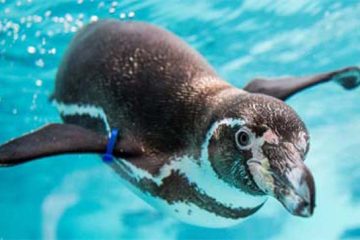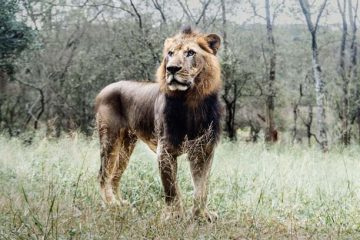 Numbers of pig-nosed turtles have declined steeply over the past 30 years, researchers have discovered.
Numbers of pig-nosed turtles have declined steeply over the past 30 years, researchers have discovered.
The unique reptile has become an international conservation icon, due to it having no close relatives and being considered the turtle most adapted to life underwater in freshwater ponds and rivers.
Yet demand for its eggs and meat in Papua New Guinea, one of the turtle’s main homes, has led to the species being dramatically over-harvested by indigenous people.
Details of the decline are published in the journal Biological Conservation.
“Pig-nosed turtles are considered unique and unusual among freshwater species of turtles in many facets of their morphology, ecology and behaviour,” Carla Eisemberg of the University of Canberra, Australia, told BBC Nature.
For example, embryonic pig-nosed turtles become male or female depending on the temperature of the ground their eggs are laid in, while fully developed embryos can delay their hatching.
The pig-nosed turtle is also of great interest to scientists because of its unique position in the turtle family tree.
It is the sole survivor of a once widespread family of turtles called the Carettochelyidae, and has a restricted global distribution, being only found in north Australia and New Guinea Island.
Despite living in freshwater, it is also resembles marine turtles.
“Similar to marine turtles, its limbs are paddle-shaped, but still possess movable digits,” said Prof Eisemberg.
That means it might represent a stage of gradual evolution of turtles from freshwater to the sea, and the study of its ecology can help to understand the evolution of marine turtles.
“On the other hand, the similarities they share also make it vulnerable to the same threats that marine turtles face, such as harvesting of nests and adults,” said Professor Eisemberg.
To find out what impact such harvesting may be having on the turtle, Professor Eisemberg surveyed the numbers of eggs and adult turtles nesting in the Kikori region of Papua New Guinea. Her team also studied how many turtles and eggs passed through local markets and were consumed in villages along rivers and the coast.
Scientist Mark Rose, now at Fauna and Flora International in Cambridge, UK, and a member of Professor Eisemberg’s team, conducted a similar survey of pig-nosed turtle numbers between 1980 and 1982.
That allowed the scientists to directly compare how the turtle has fared over the past 30 years.
Anecdotal evidence suggested that turtle numbers had fallen, but “we provided, for the first time, concrete evidence of a substantive decline in these pig-nosed turtle populations,” said Prof Eisemberg.
The researchers found that villagers harvested more than 95% of monitored nests. Female turtles have also become smaller on average; bigger individuals have been removed from the wild population and the overall life expectancy of the species has fallen.
The team also discovered more than 160 adult female turtles that had been harvested in the study area.
Overall “we estimated the decline in this pig-nosed turtle population to be more than 50% since 1981,” said Professor Eisemberg.
“Such a decline is likely to be widespread as the species is under similar pressures elsewhere in Papua New Guinea,” she added.
“Highly prized as food, it is the most exploited turtle in New Guinea. Both turtle and eggs are collected for trade or consumption by local villagers.
“The pressure on pig-nosed turtle populations has increased in recent years, especially in Western Papua and Papua New Guinea.”
That is mainly due to the growth in human populations, a greater propensity for villages to establish on riverbanks following the cessation of tribal warfare and the introduction of new technologies, such as modern fishing gear, she said.
According to the scientists, conservation plans to save the turtle are urgently needed, and, even if implemented, it will take decades for the pig-nosed turtle to recover.
But these plans must be made sensitively, as the indigenous communities living in pig-nosed turtle habitat often rely on protein from the reptile to survive.
“We need to provide win win outcomes to both local and conservation communities,” said Professor Eisemberg.
-With bbc.co.uk input Image credit: Ricardo Franca Silva



